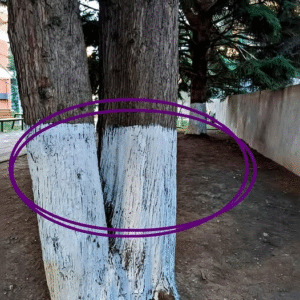I’ll be honest, I’ve been there—a hard, crusty loaf of bread sitting on my counter, and I’m thinking to myself: “Is this just stale bread, or is it time to let go?” And I can’t be the only one! Bread has this crazy tendency to go from fresh and soft to rock-hard in one day. But now the real question: is stale bread okay to eat? What about those greenish-blue splotches that show up as if they had a role as surprise guests at a party you never threw!
Let’s unpack this because stale bread can be salvaged in some circumstances, but it helps to understand the distinction between “past its prime” and “just plain unsafe.”
Is stale bread safe to eat?
Let’s start off with the good news—yes, stale bread is in most cases safe to eat, as long as it is dry and not moldy. Bread becomes stale because it has lost moisture. Therefore, the bread is hard or chewy, but that does not mean there is anything wrong with it.
The texture change occurs because of a natural process called retrogradation, where the starch molecules within the bread re-crystallize and expel water. This is not dangerous—merely disgusting to eat plain, especially given any expectation of the soft feel of bakery-fresh! But don’t throw it away!
You can bring stale bread back to life in a few ways:
Heat it: Put it in the oven for a few minutes (350°F or around 175°C) wrapped in foil, and it will rehydrate the insides of the bread.
Toast it: Stale bread actually makes for great toast, since it crisps exceptionally well. Repurpose it: More on that in a second—but stale bread can be a goldmine for cooking.
Now, if you’re thinking of eating stale bread as is, with perhaps a touch of butter or jam, you might be let down. But if you’re up for it, there’s still life left in that loaf.
What can you do with stale bread (if you aren’t going to eat it plain)?
Stale bread isn’t trash—it’s an ingredient. In fact, some recipes call specifically for stale bread, as they would probably be worse with fresh.

Here are some awesome things to use stale bread for:
Breadcrumbs: Further dry out your stale bread, pulsing it in a food processor, then store in an airtight container. Great for breading any protein, on top of casseroles, or just to bulk up meatballs.
Croutons: Cut the stale bread into cubes, douse with olive oil, season, then toast in the oven. Perfect for salads, and soups.
French toast: Stale bread actually works better, displaying sturdiness than fresh bread. Stale bread will soak up the custard mixture, and it will NOT fall apart and get mushy.
Bread Pudding: Stale or slightly old bread always works better for this. Old bread goes straight into the recipe dough.
Panzanella: This Italian salad calls for stale bread so when mixed with juicy tomatoes and olive oil, the bread had a chewy texture.
Stuffing: Whether you are a fan or not, stuffing always works with stale or slightly old bread.
So next time you are sitting around with stale bread, and recipes down, take that stale bread and cook with it.
What about Moldy Bread?
Now, this is where a sudden shift occurs. Moldy bread is NOT safe to eat—period. Even if you just see mold on a small portion of something you are considering eating, you shouldn’t just cut out the moldy part. While some might get away with doing that with hard cheeses or particularly dense vegetables, it might not work out with bread. Why? Because bread is porous. That soft center of bread allows for mold spores to spread in a way that goes unnoticed throughout the loaf, whether you can see it or not.
Eating moldy bread can cause allergic reactions or respiratory distress in some of those who are sensitive to molds. Some molds can create mycotoxins or toxic substances associated with food poisoning and worse.
So if your bread looks like the loaf in that image—moldy with green or black spots—well, it is best to just toss it. You can’t be too careful!

How Long Does it Take for Bread to Mold?
This is a great question and the answer depends on a few factors:
Moisture: Fresh, moist bread, such as from a bakery or from your own kitchen, molds faster than drier, mass produced bread.
Conditions: Warm and humid conditions are perfect for mold to thrive. Cooler and less humid will slow things down.
Preservatives: Store bought bread often has preservatives, like calcium propionate, to inhibit the growth of mold, which results in longer overall shelf life. In all cases:
Fresh bread without preservatives: 2 – 3 days at room temperature
Store-bought loaf bread with preservatives: In a well-maintained plastic bag, lasts up to a week or more
Refrigerated bread: May inhibit mold for 7-10 days, but also may stale faster
How to Stop Bread From Staling or Molding
It’s a bit of a balancing act preventing bread from molding and staling too quickly.
So what can you do?
Store at room temperature (short term): If you plan to eat it within a few days, keep the bread in a bread box or paper bag. Avoid plastic whenever possible (only use if in a rush), because even in a briefly-stored bag, plastic traps moisture, which can accelerate mold.
Freeze (long term): Freezing stops mold growth as well as staling. Slice the bread first, so you can take out only what you need. Wrap it in foil or plastic, and use a freezer bag to prevent freezer burn.
Avoid the fridge (most of the time): Surprisingly, refrigerating bread makes it stale faster. The starch retrogrades faster in cold. Only refrigerate if your house is very humid or hot and you’re worried about mold.
Use a bread box or cloth bag: These options allow air to circulate enough to prevent mold, and avoid staling as quickly (in between plastic and fridge).

Tips for Storing Types of Bread
Not all bread is created equal, so here are some quick tips
Artisan bread (e.g., sourdough): Use paper bag or bread box and keep at room temperature for 2-3 days (and freeze for longer).
Sandwich loaves: Keep in the original plastic bag for up to a week. Once opened, tightly reseal or move to the freezer.
Homemade bread: If it has no preservatives, you will experience staling or mold very quickly; generally, within 2-3 days. Freeze what you won’t eat.
Long story short: stale bread is safe, and even better for certain recipes. It is dry, not dangerous. Moldy bread is a no-go: don’t take the risk even if it looks like only a touch, mold can spread and you don’t want to take that health risk.
With a little forethought and fast-acting as needed, you can extend the life of your bread, save some money, and put together meals for the fam. Nobody likes throwing out a perfectly good loaf, or worse finding it too late when you’re right in the middle of toasting and you’re staring at green fuzz.
Next time your bread is on the edge, ask yourself: stale or moldy? One leads to stuffing. The other, leads to the trash. Make the right choice!





